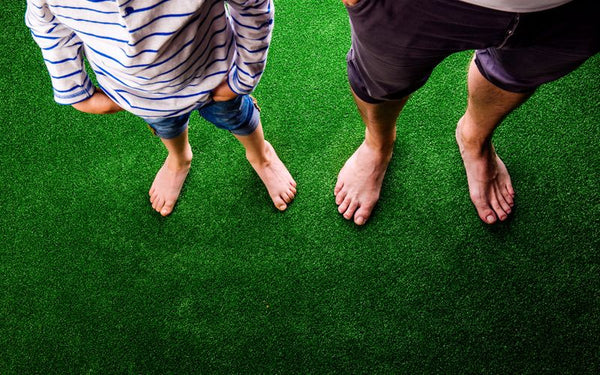Artificial grass melting is a problem that homeowners who use synthetic turf face. It's a situation that can take the edge of the enjoyment one gets from using artificial turf on one's property. Naturally, a lot of homeowners want to know why this happens and whether it can be fixed.
5 Explanations Why Artificial Grass Melts
There are undoubtedly many benefits to using artificial grass. For instance, you don't have to worry about weeds or cutting the grass. But a synthetic lawn also brings its own problems like discoloration and melting. There are several explanations as to why artificial grass melts:
- Burnished gutter: This shallow trough is used to collect rainwater and siphon it from the roof. Gutters are often painted a white or burnished color, which can reflect sunlight back towards another object, like artificial turf.
- Direct heat: The application of direct heat can happen in some ways. For example, a carelessly thrown cigarette butt or small embers from a barbecue falling on a turf. This kind of heat applied directly on a synthetic lawn can melt the grass.
- Mirrors: Aside from reflecting images, mirrors also deflect heat away from its surface and aim it at another object, like the ground. Its large size means it can cause significant damage to the area where the heat bounced off.
- Panels that reflect light: It's not immediately visible, but doors and the side of a shed or an outbuilding can also cause damage to an artificial lawn. The large surface area and the material used (ex. steel) can reflect intense light.
- Windows: These are the main culprits behind artificial grass melting, especially the new energy efficient windows. These windows' thin, transparent coating minimizes the heat that enters a house and reflects it away, placing a property's artificial turf at risk.
Can It be Solved?
While artificial grass melting can be alarming to homeowners, it's something that is easily remedied. Landscapers recommend putting alternative design features like pebbles, a small pond or an area with soil and plants. Placing these functions in the area where heat is reflected can save turf from wear and tear.
However, one of the best ways to ensure that the problem of synthetic turf melting doesn't happen is to prevent it from occurring in the first place. Homeowners should look into ways that will minimize the heat that is reflected on the grass, like putting screens or awnings on windows or coating gutters or panels with a non-reflective paint.
One of the best ways to prolong the life of your artificial grass and prevent it from melting is to put a screen or film on your windows. A transparent screen window film like Turf Guard Window Film will do the job nicely. Not only will it put a stop to artificial grass melting, but homeowners will still get a natural view from their windows.










